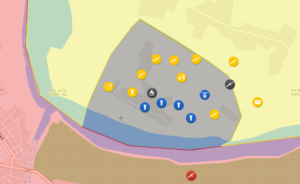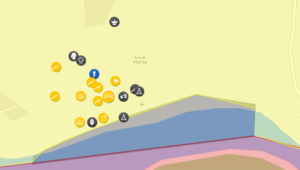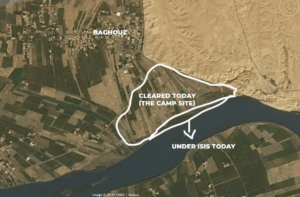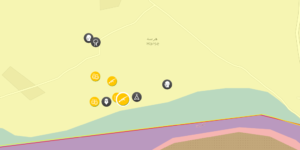This time for sure!
The very last bit of the Baghuz pocket (formerly the Hajin pocket), the very last defended territory of the Islamic State, AKA Zeno’s Caliphate, appears to have finally been cleared. By the end of battle yesterday, the Islamic State had been reduced to a tiny sliver, and today that sliver was conquered.
Here’s what the Livemap looked like on March 2, 2019:

Here’s what it looked like yesterday:


Livemap finally shows it completely cleared today:

Syrian Democratic Forces are now searching tunnels to capture or kill any remaining Islamic State members.
Why did it take so long to clear the pocket? (I first thought the end was a matter of days a month ago.) For one thing, 60,000 civilians were trapped in the pocket, and there have been pauses as a steady stream of them exited over the last two months. For another, the terrain was more daunting than I realized; the last of the Berghuz pocket was smack dab right up against an escarpment that’s too steep to use armor in an attack from the west. Here’s a few tweets that may give you an idea of the geography:
The photo describes the current #ISIS "Caliphate"#DeirEzzor #Baghuz pic.twitter.com/INTro6Qimn
— SMM Syria (@smmsyria) March 20, 2019
Two days ago we were in the hilltop in front of #Baghuz with the friends of #YPG and #QSD who were heavily fighting against the remaining #Daesh. Now the entire camp of #Daesh has been liberated! #BijiSDF #YpjIntDeZ pic.twitter.com/yR1Loy4Zh3
— YPJInternational (@YPJInternation3) March 20, 2019
More leaked pictures from Baghuz show both women and children fighting. pic.twitter.com/5g51NiLH35
— Woofers (@NotWoofers) March 16, 2019
What all that adds up to is the “Stalingrad” problem: as the front narrows the density of fighters facing you increases.
Anyway, it seems that the Islamic State, at least as a land-holding caliphate, is finally well and truly crushed. Here’s the same conclusion I used the first time I erroneously declared it dead:
The media, which seemed to avoid reporting success after hard-won success in the war against the Islamic State, not only ignored the final destruction of the Hajin pocket, is now writing articles about how the Islamic State continues as a transnational terrorist organization. This is both true and largely irrelevant. There are plenty of Islamist terrorist groups to worry about, but the Islamic State’s primary claim to legitimacy, the thing that drew foreign fighters from around the world, was its presumed legitimacy as an Islamic caliphate:
To be the caliph, one must meet conditions outlined in Sunni law—being a Muslim adult man of Quraysh descent; exhibiting moral probity and physical and mental integrity; and having ’amr, or authority. This last criterion, Cerantonio said, is the hardest to fulfill, and requires that the caliph have territory in which he can enforce Islamic law. Baghdadi’s Islamic State achieved that long before June 29, Cerantonio said, and as soon as it did, a Western convert within the group’s ranks—Cerantonio described him as “something of a leader”—began murmuring about the religious obligation to declare a caliphate.
In late 2014, the Islamic State controlled some 40,000 square miles of territory. Now it controls nothing. Abu Bakr al-Baghdadi is no longer a credible caliph, capable of claiming the allegiance of all Sunnis worldwide, but a loser and a failure, assuming he’s even still alive. Ambitious worldwide jihadists no longer have any incentive to pledge bayʿah to al-Baghdadi, and it’s entirely possible that the ones who previously had will drift away or declare their support to another transnational Islamic terrorist group like al Qaeda.
For this we can thank cost-effective strategy by the U.S.-led coalition to arm and support the Syrian Democratic Forces against the Islamic State, greatly aided by the Trump Administration’s decision to loosen the rules of engagement from what they were under Obama.
The Islamic State wasn’t completely destroyed today, but the last shred of it’s claim to a caliphate was.
Tags: al-Baghuz Fawqani, Islamic State of Iraq and Syria, Jihad, Military, Syrian Democratic Forces